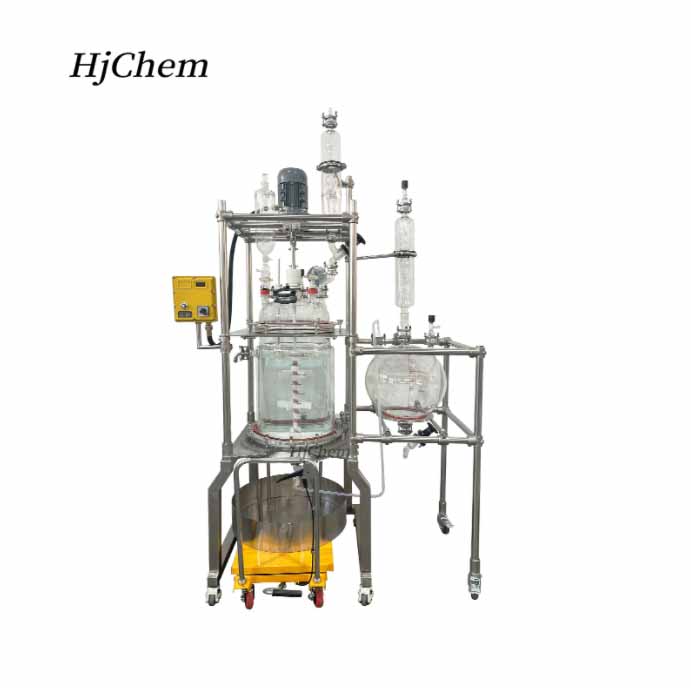A Solid Phase Peptide Synthesis (SPPS) Vessel is a specialized reaction container designed to perform Solid Phase Peptide Synthesis – the standard method for chemically creating peptides (short chains of amino acids) step-by-step on an insoluble solid support.
Basic Technical Specifications:
1. Volume: 100ml,200ml, 500ml, 1L, 2L, 3L, 5L, 10L, 20L, 30L, 50L, 100L, support customization.
2. Vessel: Single wall, double wall or triple wall available
3. Working pressure: Full vacuum to 0.05Mpa
4. Working temperature: -80°C ~ +220°C
Filter device: PTFE, glass or stainless-steel sand core plate with pore size 0.1um to 200um and PTFE filter plate with filter cloth structure.
In essence, an SPPS Vessel is the reactor, mixer, and filter combined into one purpose-built container, enabling the repetitive chemical steps of peptide synthesis while securely holding the solid support throughout the entire process.
Its efficient filtration and inert environment are critical for successful synthesis.
What is Solid-Phase Peptide Synthesis(SPPS) ?
Solid-phase synthesis is a common technique for peptide synthesis. Usually, peptides are synthesised from the carbonyl group side (C-terminus) to amino group side (N-terminus) of the amino acid chain in the SPPS method, although peptides are biologically synthesised in the opposite direction in cells. In peptide synthesis, an amino-protected amino acid is bound to a solid phase material or resin (most commonly, low cross-linked polystyrene beads), forming a covalent bond between the carbonyl group and the resin, most often an amido or an ester bond. Then the amino group is deprotected and reacted with the carbonyl group of the next N-protected amino acid. The solid phase now bears a dipeptide. This cycle is repeated to form the desired peptide chain. After all reactions are complete, the synthesised peptide is cleaved from the bead.
The protecting groups for the amino groups mostly used in the peptide synthesis are 9-fluorenylmethyloxycarbonyl group (Fmoc) and t-butyloxycarbonyl (Boc). A number of amino acids bear functional groups in the side chain which must be protected specifically from reacting with the incoming N-protected amino acids. In contrast to Boc and Fmoc groups, these have to be stable over the course of peptide synthesis although they are also removed during the final deprotection of peptides.
For more information, please visit our website:
Solid Phase Peptide Synthesis Vessel
https://njhjchem.com/product/glass-nutsche-filters/solid-phase-peptide-synthesis-vessel/
bio-equip.cn




